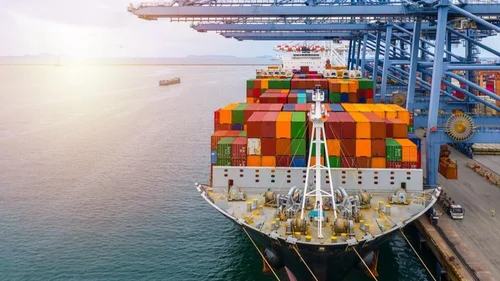In today’s interconnected world, sea cargo plays a vital role in global trade and commerce. Shipping goods by sea remains one of the most cost-effective and efficient ways to transport large quantities of products across continents. This blog explores the ins and outs of sea cargo, including its advantages, key considerations, and the process involved.
What is Sea Cargo?
Sea cargo refers to the transportation of goods and merchandise by sea using cargo ships or container vessels. This method of shipping is preferred for large volumes of cargo, heavy items, and international trade due to its cost-efficiency and capacity.
Advantages of Sea Cargo
- Cost-Effectiveness: One of the primary benefits of sea cargo is its affordability. Compared to air freight, sea transport is significantly cheaper, especially for large or heavy shipments.
- Large Capacity: Cargo ships can carry substantial amounts of goods, making them ideal for bulk shipments. Whether you’re transporting raw materials, manufactured products, or consumer goods, sea cargo can accommodate various types of cargo.
- Global Reach: With numerous international ports and shipping routes, sea cargo provides extensive global coverage, making it possible to ship products to nearly any location worldwide.
- Environmental Impact: Although not without its environmental challenges, sea cargo tends to have a lower carbon footprint per ton-mile compared to air freight, making it a more sustainable option for long-distance shipping.
Key Considerations for Sea Cargo
- Transit Time: Sea cargo generally involves longer transit times compared to air freight. It’s essential to plan shipments well in advance to account for potential delays and longer delivery periods.
- Customs and Regulations: International shipments require adherence to various customs regulations and documentation. Understanding and complying with these requirements is crucial to avoid delays and additional costs.
- Cargo Handling: Proper handling and packaging are vital to ensure the safety and integrity of your cargo during transit. This includes securing goods to prevent damage and selecting appropriate containers for different types of cargo.
- Insurance: Considering the potential risks involved in sea transport, such as damage or loss of cargo, obtaining insurance coverage is advisable. Marine insurance helps protect against unforeseen circumstances that could affect your shipment.
The Sea Cargo Shipping Process
- Booking: The process begins with booking space on a cargo ship. This involves selecting a shipping line and reserving space based on the type and volume of cargo.
- Documentation: Proper documentation is required, including the Bill of Lading, commercial invoice, packing list, and other relevant paperwork. These documents are crucial for customs clearance and tracking your shipment.
- Loading: Once documentation is complete, the cargo is loaded onto the ship. This process involves careful handling and stowing to maximize space and ensure safety during transit.
- Transit: The ship then sets sail, transporting your cargo across the sea to its destination port. During this period, tracking systems provide updates on the shipment’s progress.
- Unloading and Delivery: Upon arrival at the destination port, the cargo is unloaded and processed through customs. Finally, it is delivered to the specified location or arranged for further transportation if needed.
Conclusion
Sea cargo remains a cornerstone of global trade, offering a reliable and cost-effective solution for transporting goods across long distances. By understanding the advantages, key considerations, and process involved, businesses and individuals can better navigate the complexities of international shipping and ensure their cargo reaches its destination efficiently.




